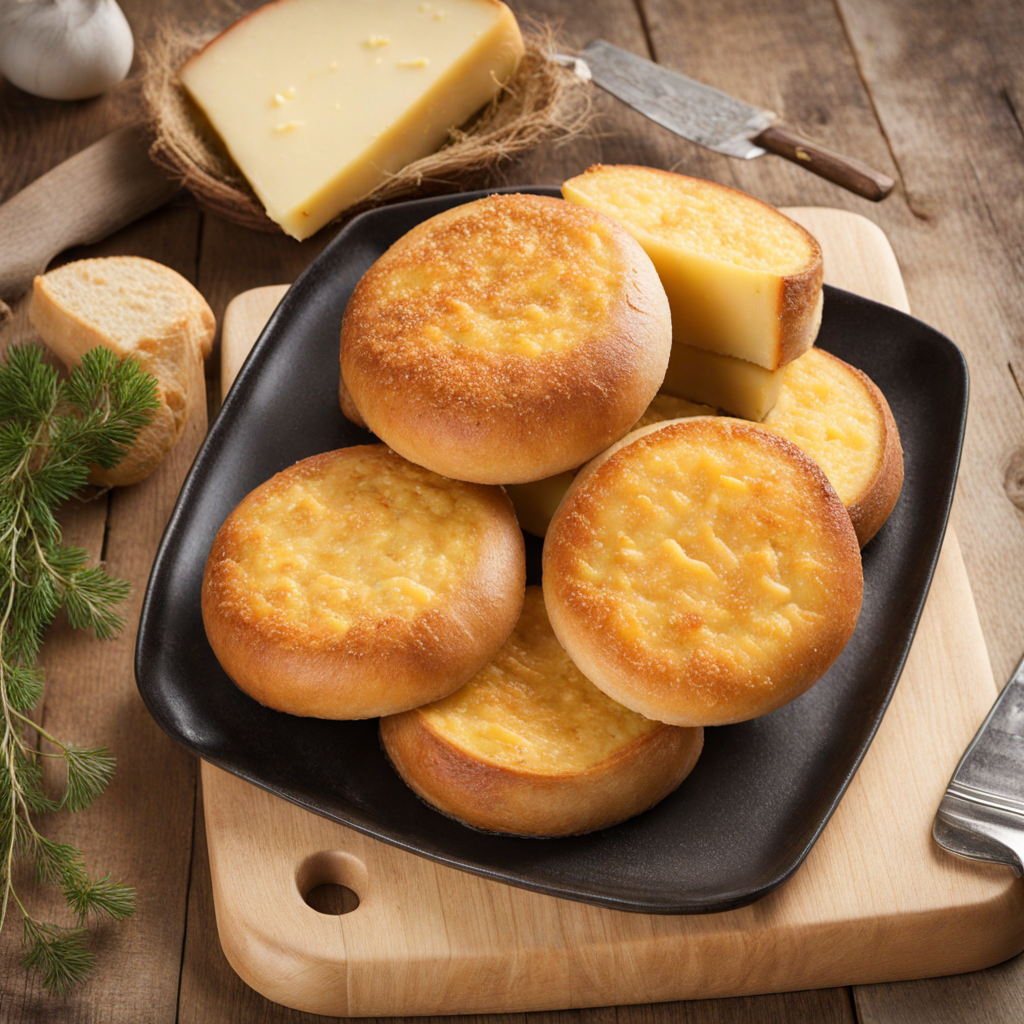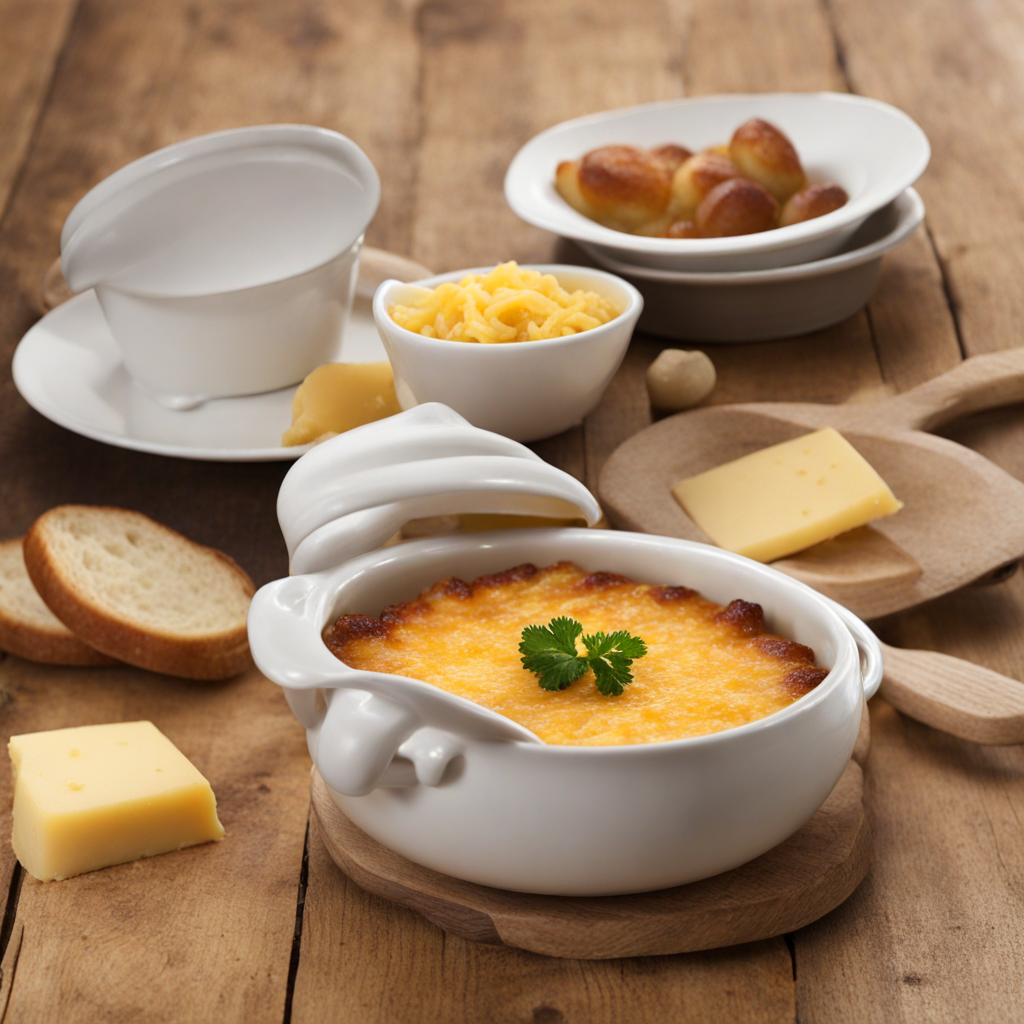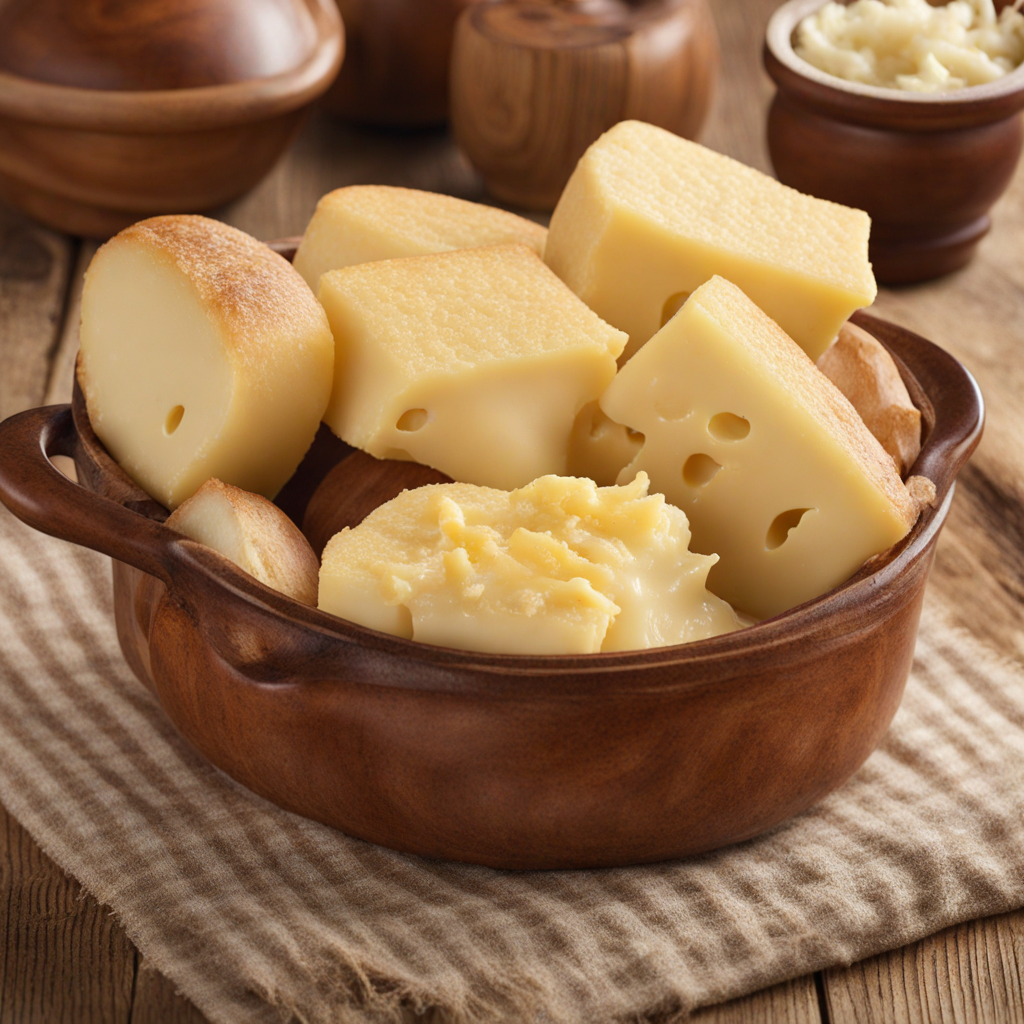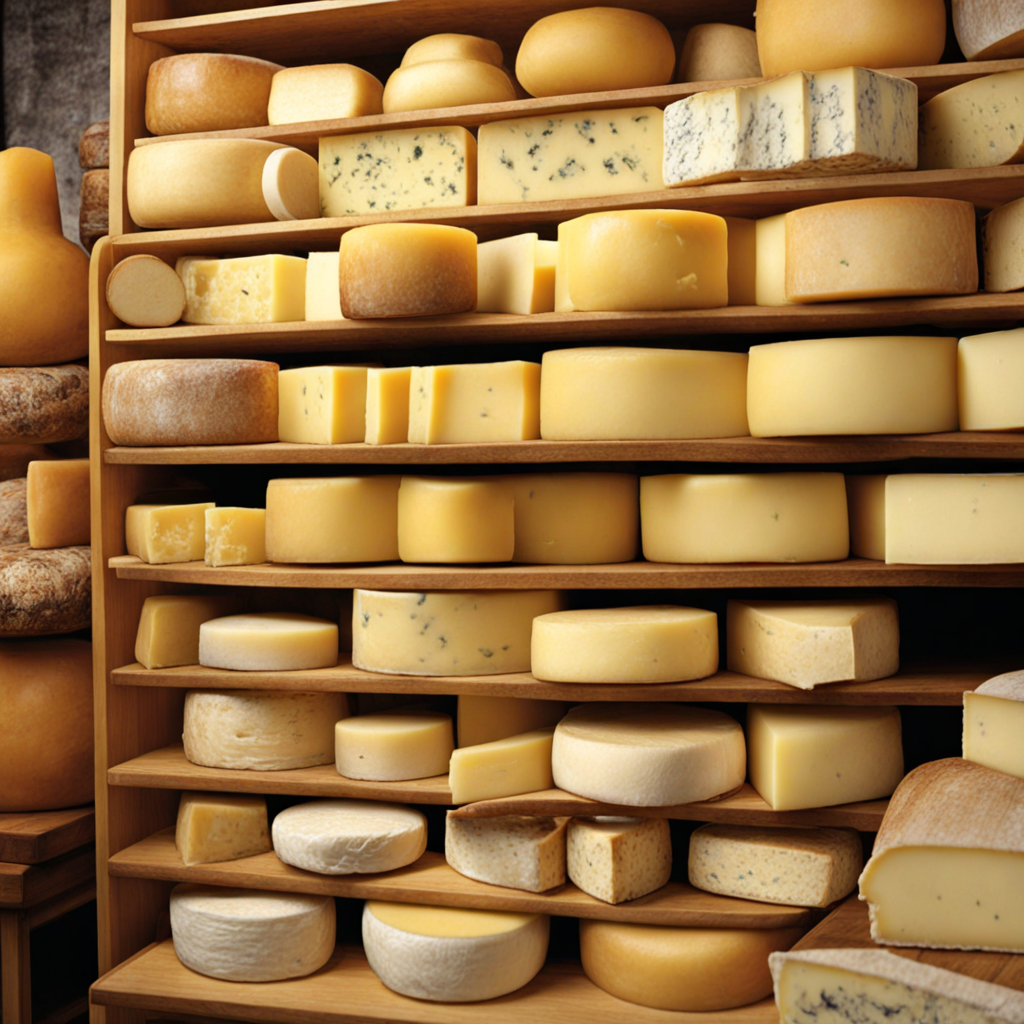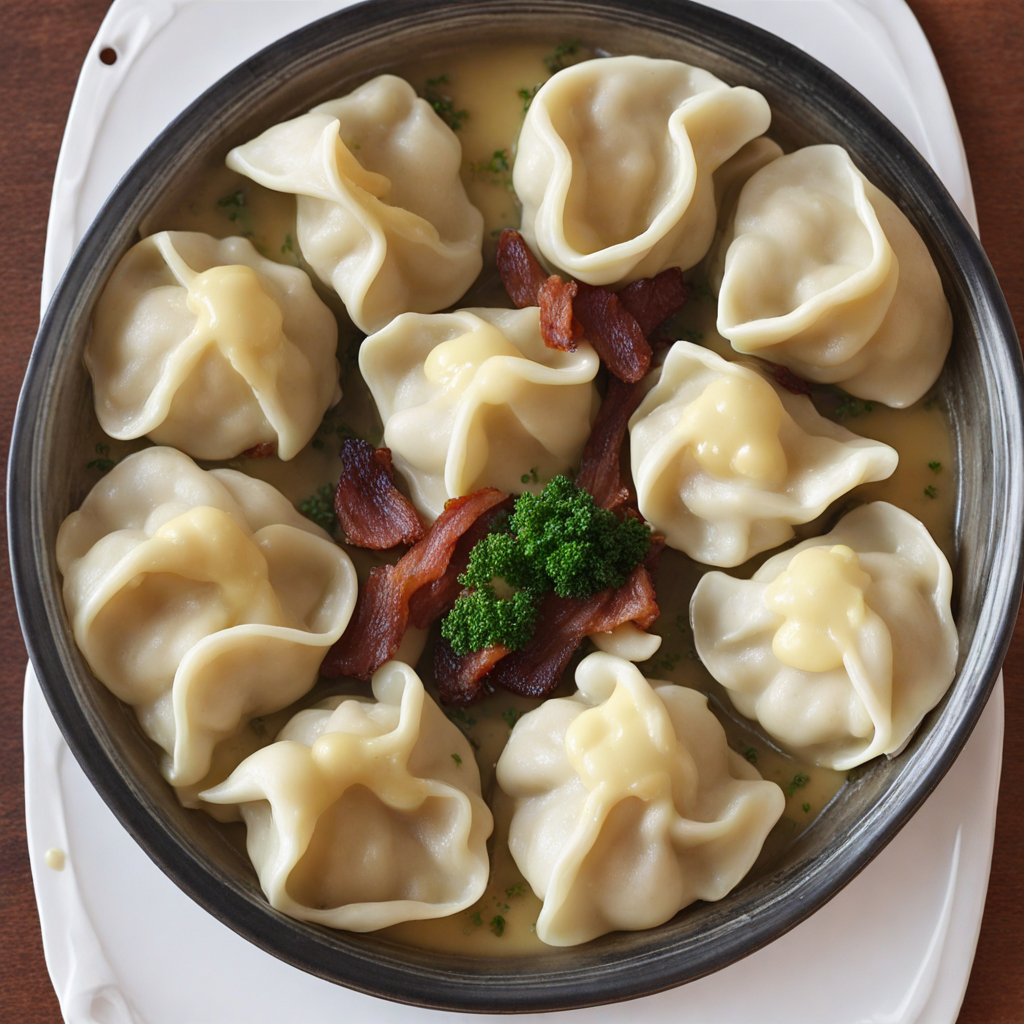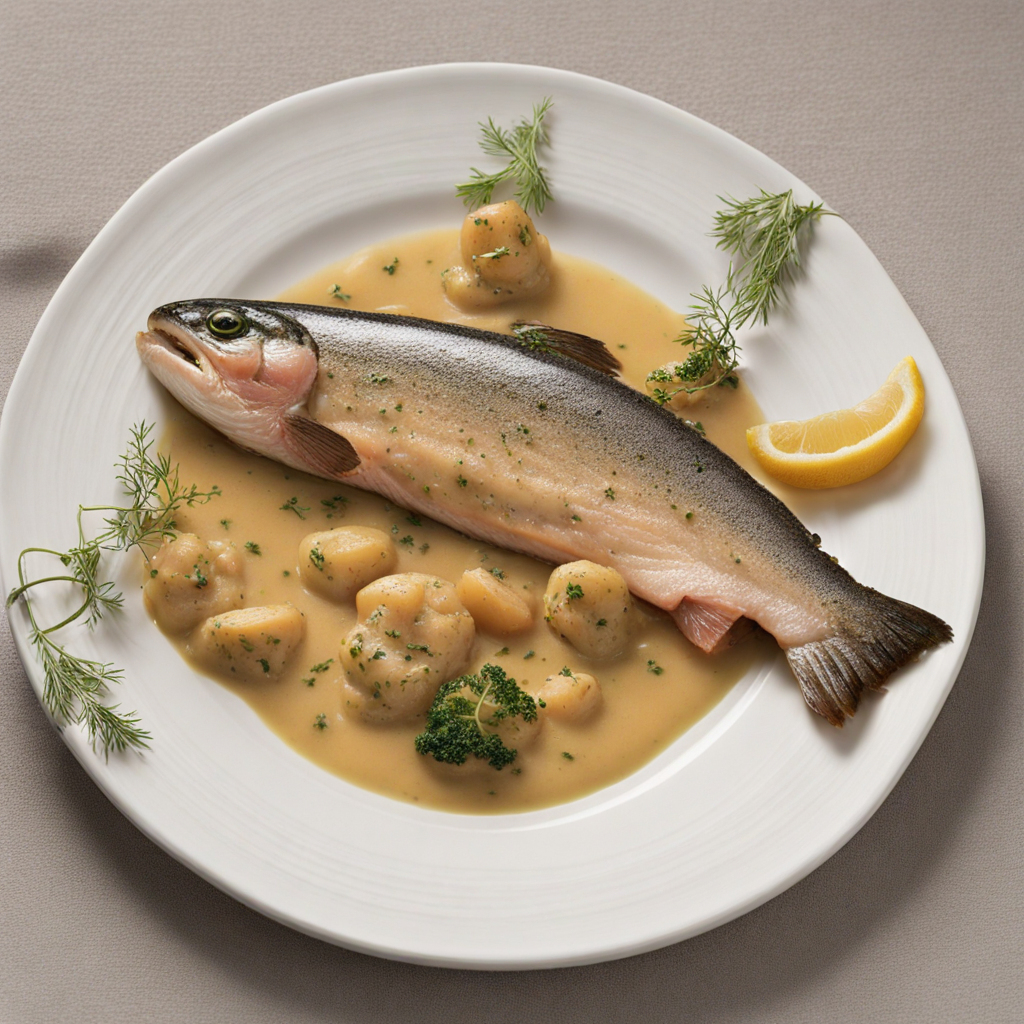Kachkéis
Kachkéis is a traditional Luxembourgish dish that embodies the essence of the country's culinary heritage. This unique delicacy is essentially a soft cheese, often made from cow's milk, that is characterized by its creamy texture and mild flavor. The cheese is typically served warm and is often enjoyed with a side of crusty bread or boiled potatoes, making it a comforting and satisfying dish. The gentle tang of the cheese pairs beautifully with fresh herbs or a drizzle of local honey, adding depth and complexity to each bite. The preparation of Kachkéis is a delightful process that reflects the artisanal skills passed down through generations. It involves heating the curds until they reach a specific temperature, allowing them to become stretchy and pliable. This warm cheese is then typically served in a cast-iron dish, often accompanied by a sprinkle of paprika or a dash of black pepper for an extra kick. The melting quality of Kachkéis makes it perfect for dipping or spreading, inviting diners to indulge in its rich, gooey goodness. This dish not only highlights the importance of dairy farming in Luxembourg but also showcases the country's commitment to using high-quality, locally-sourced ingredients. Kachkéis is often enjoyed during special occasions and gatherings, where it brings people together around the table. With its rustic charm and delightful flavors, Kachkéis is a culinary treasure that promises to transport taste buds on a memorable journey through the heart of Luxembourg's gastronomic landscape.
How It Became This Dish
The History and Cultural Significance of Kachkéis in Luxembourg Kachkéis, a traditional cheese dish from Luxembourg, is not only a culinary delight but also a symbol of the country's rich cultural heritage. This delightful dish, characterized by its creamy texture and distinct flavor, has deep roots that reflect the agricultural practices, social customs, and regional identity of Luxembourg. #### Origins of Kachkéis The origins of Kachkéis can be traced back to the rural communities of Luxembourg, where dairy farming was a vital part of daily life. The word "Kachkéis" itself translates to “cooked cheese,” highlighting its primary ingredient and method of preparation. Traditionally, Kachkéis is made from milk, which is heated and then curdled, often using rennet or an acidic agent. Once curds form, they are drained and then cooked, resulting in a soft, spreadable cheese. The art of cheesemaking in Luxembourg is believed to have been influenced by its neighboring countries, particularly Germany, France, and Belgium, each of which has its own cheese traditions. The practice of cooking cheese is not unique to Luxembourg; variations can be found in other European cultures, but the specific methods and ingredients used in Kachkéis are distinctively Luxembourgish. #### Cultural Significance Kachkéis is more than just a dish; it embodies the spirit of communal living and the agricultural lifestyle of Luxembourg. Traditionally, Kachkéis was prepared in households, especially during the winter months when fresh vegetables and fruits were not available. It served as a staple food, providing essential nutrients and energy for the local population. In Luxembourg, food is often a central part of social gatherings and celebrations. Kachkéis has found its place in both festive occasions and everyday meals, being served alongside bread, potatoes, or pickles. It is commonly enjoyed during family gatherings, community events, and local fairs, where it is celebrated as a representation of Luxembourgish heritage. The dish also has a symbolic connection to the broader European tradition of cheesemaking, which emphasizes the importance of local produce and sustainable practices. By consuming Kachkéis, Luxembourgers embrace their agrarian roots and the concept of terroir, a French term that refers to the unique environmental factors that affect a food's character. #### Development Over Time The 20th century marked a significant period in the evolution of Kachkéis and Luxembourgish cuisine in general. With the advent of industrialization, traditional farming practices began to decline, and many rural communities were transformed. The cheese-making process, once a family affair, started to see changes as larger dairies emerged, leading to a shift in production methods. Despite these changes, Kachkéis has managed to retain its traditional charm. Small-scale producers and artisanal cheesemakers have emerged, focusing on preserving authentic recipes and methods. Many of these artisans are dedicated to using high-quality, locally sourced ingredients, ensuring that each batch of Kachkéis reflects the unique characteristics of the region. Culinary tourism has also played a role in revitalizing interest in Kachkéis. As visitors flock to Luxembourg to experience its rich history and culture, local foods have gained prominence. Restaurants and bistros have begun to feature Kachkéis on their menus, often presented with a modern twist. Chefs experiment with flavors and pairings, introducing Kachkéis to a new generation of food lovers while still honoring its traditional roots. #### Kachkéis Today Today, Kachkéis remains a beloved dish in Luxembourg, celebrated for its simplicity and versatility. It can be enjoyed as a spread on crusty bread, incorporated into various recipes, or served as a warm dip with vegetables. The dish is often enhanced with herbs, spices, or even garlic, showcasing the creativity of contemporary chefs while paying homage to its humble beginnings. In recent years, Kachkéis has also gained recognition beyond Luxembourg’s borders. Food festivals and international culinary competitions have featured this delightful cheese dish, allowing it to reach a broader audience. As Luxembourg continues to embrace its culinary heritage, Kachkéis stands out as a testament to the country's agricultural practices and cultural identity. #### Conclusion Kachkéis is more than just a food item; it is a narrative woven into the fabric of Luxembourg's history, society, and culture. From its humble beginnings as a staple in rural households to its modern-day reinterpretations, Kachkéis encapsulates the essence of Luxembourgish culinary traditions. As it continues to evolve, this delightful cheese dish serves as a bridge between the past and the present, connecting generations of Luxembourgers through shared memories and flavors. In a world increasingly focused on globalization and the homogenization of food, Kachkéis remains a beacon of local identity, celebrating the agriculture, history, and community spirit that define Luxembourg. Whether enjoyed in a bustling café or at a family gathering, Kachkéis invites all to partake in the rich tapestry of Luxembourg’s culinary heritage, one creamy bite at a time.
You may like
Discover local flavors from Luxembourg


